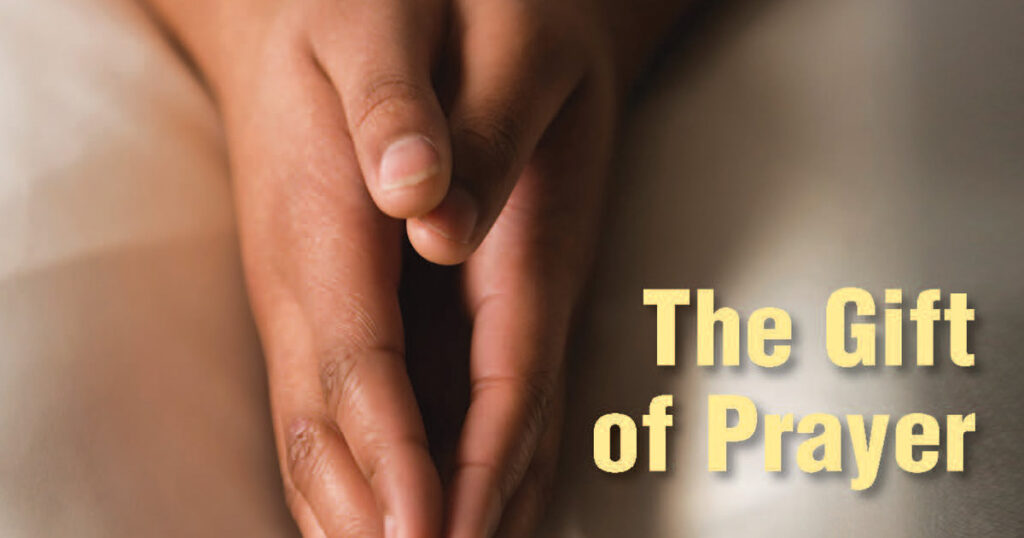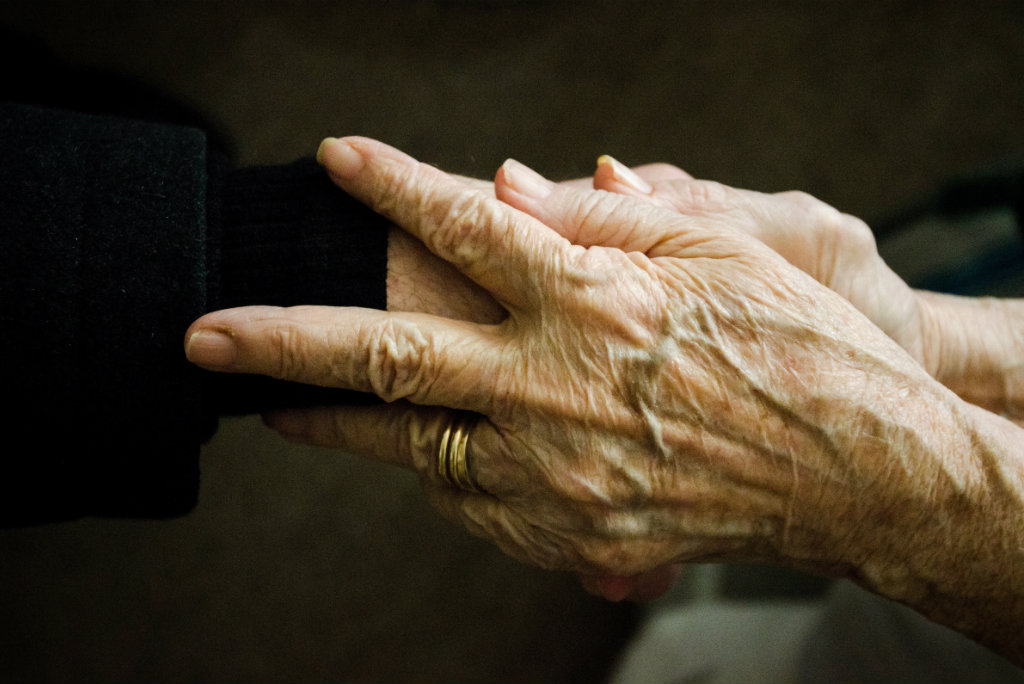By James R. Eggert
As Christians and especially as Lutherans, many of us pray the Common Table Prayer before meals. We learn it as children, pray it at our tables at home or in restaurants, and join in reciting it at communal meals.
Some of us know it in the language our grandparents or great-grandparents prayed. Its wording varies somewhat from family to family, but typically we know it as one of these, in English or in German:
Come, Lord Jesus, be our Guest; and let these gifts to us be blessed.
Komm, Herr Jesu; sei unser Gast; und segne, was du uns bescheret hast.
The Common Table Prayer, simple and succinct, invites Jesus to be with us in words accessible to children and still meaningful to adults.
We know that the Common Table Prayer is old, older than our own memory, older even than the people we remember from our childhood. But how old is it, and who wrote it? Though it has sometimes been attributed to Martin Luther, the prayer is not found in any known work of the Reformation era. And although its theological meaning and current use have recently been discussed in The Lutheran Witness, its origin has not.
Numerous authors have noted that the Common Table Prayer is very similar to portions of an aria[i] written in 1669 by Johann Rudolph Ahle (1625–1673). Ahle was the Lutheran organist and, as such, Johann Sebastian Bach’s penultimate predecessor in Mühlhausen, Germany. The prayer seems to be derived from the first and third stanzas of his aria. But when and by whom?
It has long been thought that the Common Table Prayer was first published in London in 1753 in a hymnal written by the German radical Pietist Nicolaus Ludwig Graf von Zinzendorf (1700–1760). Founder and bishop of the renewed Moravian Church (Brüdergemeine), Zinzendorf was a prolific poet and author of many hymns. Relying on his hymnal, many have attributed the prayer to the London Brüdergemeine in general or to Zinzendorf in particular, placing its origin in London in 1753.
New research,[ii] however, has shown that the Common Table Prayer was in fact already widely known by 1753. Its earliest known publication was in 1698, before Zinzendorf’s birth.
This earliest publication was in a schoolbook written in Leipzig by Johann Conrad Quensen, the son of a Lutheran pastor, and entitled Neues und Nützliches SchulBuch Vor Die Jugend Biß ins zehente oder zwölffte Jahr [iii] (“New and useful schoolbook for youth up to the tenth or twelfth year of age”).

Johann Conrad Quensen is a figure largely unknown to history. His father was Conrad Quensen, who worked as a private teacher in Hannover and then served as Lutheran pastor in Heersum (1661–1668) and Heinde (1668–1683), two villages near Hildesheim. The elder Quensen died at the end of his pastorship in Heinde. The son Johann Conrad Quensen initially lived with his mother in the Heinde pastor widow house.[iv]
After studies at the University of Helmstedt[v] and the University of Leipzig[vi] , he pursued activities as the author of this schoolbook, of a few occasional poems and elegies[vii] published 1694–1699, of several books on rapid calculation[viii] 1701–1721, and of a primer and a book on Christian morals for the youth[ix] in 1726. Little more is known of Quensen.


Did Quensen write the prayer or merely collect it from some other source? He probably wrote it in Leipzig for his 1698 SchulBuch. The text of Ahle’s aria had just been republished in Leipzig less than nine months earlier in an eight-volume hymnal called the Wagner Gesangbuch,[x] a work later also used by Johann Sebastian Bach. Quensen knew several people involved in the publication of that voluminous hymnal and certainly had access to it in Leipzig. Since no mention of the prayer is known before Quensen’s schoolbook, and because the SchulBuch is so closely associated in time, place, and by personal connections with the Gesangbuch, it seems likely that that Quensen used Ahle’s text from the hymnal to write a new table prayer for children for his upcoming book.
Quensen’s schoolbook enjoyed immediate international success and wide influence. This was in part because it treated four subjects (reading, religion, Latin and courtesy) in one volume that could save parents the cost and inconvenience of buying several smaller books. Its writing style and reliance on passages from the Bible and Luther’s Small Catechism well suited the intended audience of younger Lutheran schoolchildren. Its broad distribution spread the prayer with it, initially through schools, then, as its original audience aged, through society more generally. Over the next half century, the prayer became known throughout German-speaking lands and was quoted in more than twenty other books before appearing in Zinzendorf’s London hymnal.[xi]

Why did these publications of the Common Table Prayer before 1753 elude earlier researchers? Most certainly because, while the researchers were largely hymnologists or Moravian specialists, none of these early works are hymnals and all save one are by Lutheran authors. Many of these works are today available only in a few libraries. One item probably should not have escaped notice, though, as it has been on public display in the Germanisches Nationalmuseum in Nuremberg since 1970: an earthenware bowl[xii] quoting the prayer and carrying the date 1733 (see 4).
Some have described the prayer as sounding childish, others have commented on its theological imprecision, and yet others have claimed that its origin lay in superstition, but these criticisms now seem out of place. Our beloved Common Table Prayer was written as a prayer for children, its simple piety sufficient for the purpose of educating the young in a solidly Lutheran context, yet profound in its call for Christ’s presence and blessings in our lives. Now we know that the prayer was written not in London in 1753, but most likely in Leipzig in 1698. Its author is now provisionally identified as Johann Conrad Quensen, son of a Lutheran teacher and pastor. And we can look back on at least 325 years of our Common Table Prayer!
[i] Johann Rudolph Ahle, “Komm/ Jesu Christ! sey unser Gast,” Anmuhtiges Zehn Neuer Geistlicher Arien, Opus decimum quintum (Mühlhausen: Hüter, 1669), all known copies lost; Albert Fischer, Wilhelm Tümpel, Das deutsche evangelische Kirchenlied des siebzehnten Jahrhunderts, Bd. 4 (Gütersloh: Bertelsmann, 1904), 264, https://archive.org/details/dasdeutscheevang04fisc/page/264/.
[ii] James R. Eggert, ‘The Origin and Diffusion of the Common Table Prayer “Come, Lord Jesus”,’ Lutheran Quarterly 37 (Spring 2023), 49–72, https://www.lutheranquarterly.org/.
[iii] Johann Conrad Quensen, Neues und Nützliches SchulBuch Vor Die Jugend Biß ins zehente oder zwölffte Jahr (Hannover and Wolfenbüttel: Freytag, 1698), 159, https://books.google.com/books?id=RT7V_uPYtwgC&pg=PA159.
[iv] Pfarrbestallungen der Gemeinde Heinde, NLA HA, Hann. 83, III Nr. 345, 1668–1792, http://www.arcinsys.niedersachsen.de/arcinsys/detailAction?detailid=v2945263.
[v] “Album studiosorum”: Matrikel von der Hand des Vizerektors, des Sekretärs oder Pedells, Universität Helmstedt (Academia Julia), Niedersächsisches Landesarchiv, Abteilung Wolfenbüttel, NLA WO 37 Alt Nr. 2573, Liste 1689 I, 18 Jan–10 Jul 1689, 499–504, http://www.arcinsys.niedersachsen.de/arcinsys/detailAction?detailid=v5597707.
Also in Herbert Mundhenke, Die Matrikel der Universität Helmstedt, Bd. 3: 1685–1810 (Hildesheim: Lax, 1979), 16, http://diglib.hab.de/wdb.php?dir=drucke/f4f-211-3b&pointer=37.
[vi] Georg Erler, Die jüngere Matrikel der Universität Leipzig 1559–1809 (Leipzig: Giesecke & Devrient, 1909), 2:344, https://books.google.com/books?id=aWw0AQAAMAAJ&pg=PA344.
[vii] Dienstschuldigstes Thränen-Opffer/ welches über den frühzeitigen und höchstschmertzlichen Hintritt der an Ehr- und Tugend Hoch-Edlen und Hochgelobten Fr. Johanna Marien gebohrnen Albertin (Leipzig: Johann Wilhelm Krüger, 1694), http://dx.doi.org/10.25673/opendata2-28359; Katalog der fürstlich Stolberg-Stolberg’schen Leichenpredigten-Sammlung (Leipzig: Degener, 1927–1935), 1:28, 2:633, 3:236; Gläubiger Christen Geistliches Gnaden-Leben in Christo (Leipzig: Johann Georg, 1695), Scan 71, http://resolver.staatsbibliothek-berlin.de/SBB000206FC00000071; Johann Conrad Quensen, Als Die Durchlauchtigste Fürstin und Frau/ Frau Christiana/ verwittbete Hertzogin zu Sachsen/ … Dero Geburts-Fest den 22. Septembris Anno 1698 … begiengen (Leipzig: Tietzen, 1698), http://vd17.bibliothek.uni-halle.de/pict/2005/3:676943S/; and Ehren-Gedächtniß Dem Hochwürdigen/ Magnifico und Hochgelahrten Herrn George Lehmannen … Am Tage Seines Leichen-Begängnisses/ War der 23. Martii Anno 1699 (Leipzig: Zschau, 1699), Scan 78, http://resolver.staatsbibliothek-berlin.de/SBB0001E7E500000078.
[viii] See Theophil Georgi, Allgemeines Europäisches Bücher-Lexicon (Leipzig: Georgi, 1742), 3:259, https://books.google.com/books?id=p_w5Epnm8c8C&pg=RA3-PA259; and Johann Ephraim Scheibel, Einleitung zur mathematischen Bücherkenntniß. Zweyter Band (Breslau: Johann Ernst Meyer, 1781), 539, https://books.google.com/books?id=s4BYAAAAcAAJ&pg=RA1-PA539.
[ix] Extract Derer in der L Woche des 1726 Jahres eingelauffenen Nouvellen (Leipzig: December 13, 1726), 200, https://books.google.com/books?id=3i0TAAAAYAAJ&pg=PA200. Photo: M. Runge.
[x] Andächtiger Seelen geistliches Brand- und Gantz-Opfer (Wagnersches Gesangbuch) Theil I: D. Martin. Lutheri und andere in unserer Evangelischen Kirchen gewöhnliche Gesänge (Leipzig: Zeidler, 1697), 485, https://books.google.com/books?id=aPLvFL1yZU0C&pg=PA485. The text had also previously been republished in Mühlhausen the same year and perhaps also in 1686.
[xi] James R. Eggert, Common Table Prayer sources to 1753, 9 November 2022, https://www.aegilops.com/ctp/sources1753.html.
[xii] Schüssel. Germanisches Nationalmuseum, Inventarnummer BA1497 (Hessen(?), 1733), http://objektkatalog.gnm.de/objekt/BA1497. Photo: M. Runge.
Cover image: “Grace,” photograph by Eric Enstrom, 1918, colorized.




